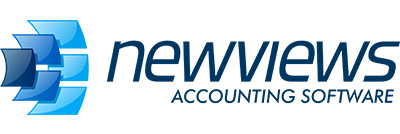The anchor date is the simplest thing in NV2, and seemingly the most difficult to explain.
Let’s take a weekly payroll situation. Fine, the payroll is weekly, and in most years there are 52 pay periods. But, different employers with weekly payrolls will have the pay periods start/end on differnt days of the week. Some will have the pay period run Saturday to Friday, others will run from Monday to Sunday. There are seven possible start/end combinations here.
All (and I mean ALL) the anchor date is for is to tell NV2 payroll which of those seven start/end days that particular weekly payroll is based on. If your weekly payroll rund Sunday to Saturday then the anchor date would be ANY Saturday – you would enter it once, and never have to touch it again.
Now that that date is set, NV2 payroll can figure out the pay-period start and end dates for any pay period in any year. There will be no overlap and no gaps between pay-periods (which would alway’s be the result if the start and end dates were left to manual entry.)
Why do we care so much about the start and end dates?
Well, for Canadian employers, the Record of Employment is an important document that must be produced whenever an employee is terminated. On that report, the employer must report the earnings by pay-period – which has nothing to do with the check dates. So, NV2 payroll is kinda picky about the pay-period dates.
From the NV2 On-Line Manual, Payroll Payroll Terms and Definitions.
NewViews Payroll calculates the begin and end dates of your pay periods based on a year and a pay period number. To do this, it must know the ending date of one of your pay periods, and from this date it can calculate the dates of any other pay period.
For example, you have a weekly payroll, and your pay periods run from Monday to Sunday each week. For the pay period end anchor date, you would enter the date of any Sunday, such as December 26, 2004.
Now that NewViews payroll knows you operate a weekly payroll, and your pay periods end on Sunday, it is able to calculate the begin and dates of any pay period in the past or future. For example, the 1st pay-period in 2005 would start on Monday December 27, 2004 and end on Sunday January 2, 2005.
NOTE: You only need to set the anchor date once. Once it has been set, all other pay period dates can be calculated based on this date
Now your questions:
Q. When I set the Anchor date, I still had to manually enter the PP’s before I could run Payrun. In fact I had to enter All the PP’s for each Process listed.
A. The Payruns with no dates set were those imported from NV1 – and in NV1 there was *no* record of the pay period dates. Hense, after the import, those dates were blank.
Q. When setting the Anchor Date are you asking for the 1st PP date of just the PP date for than payrun
A. A stated above – *any* pay-period end date will do.
Q. Let’s say from nv1 there are 8 Rec Gen cheques for only 7 PP’s. How would you enter the PP dates for each? Can you use the same PP for two dates?
A. Pay-period dates don’t have anything to do with Rec Gen remittances. I really don’t know how to answer the rest of the question.
Bob Halpin
